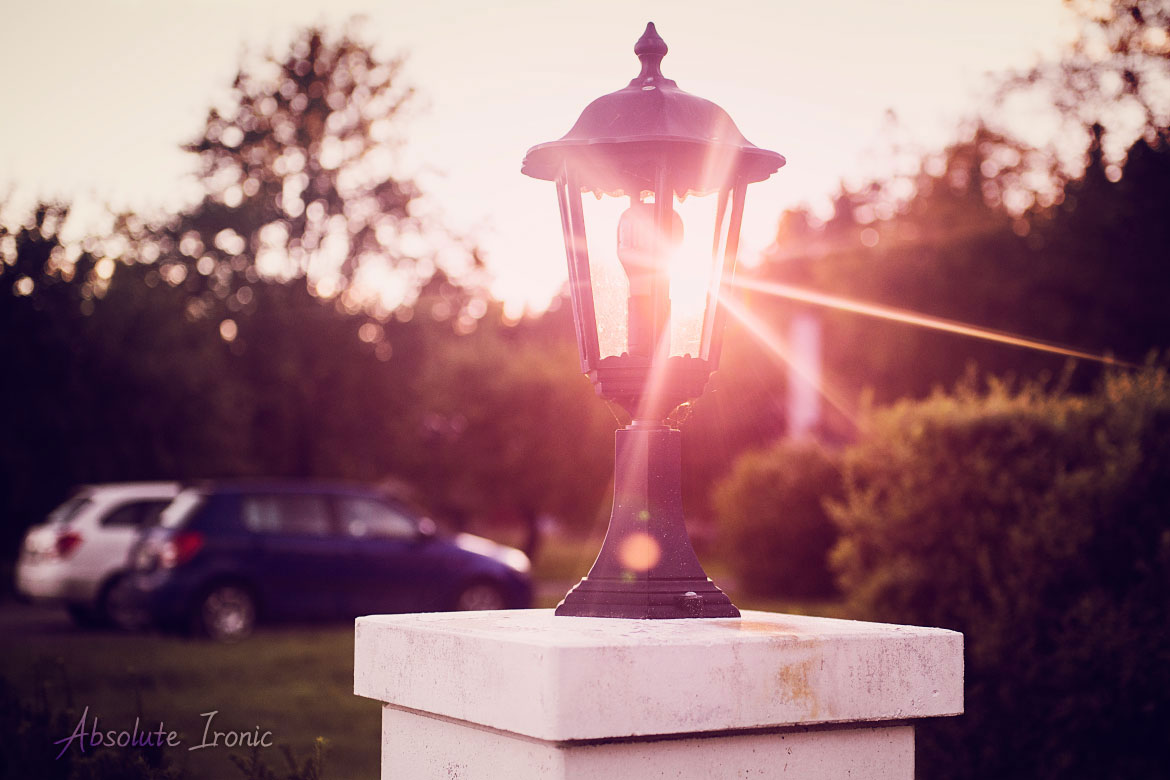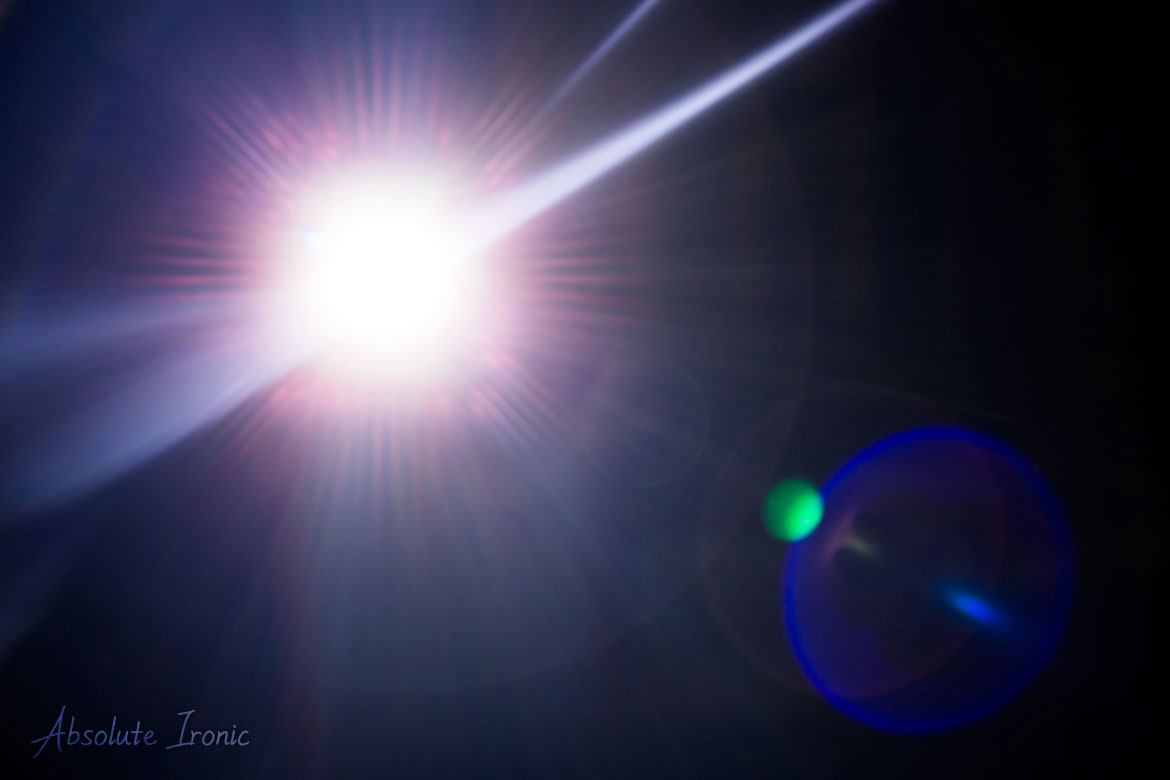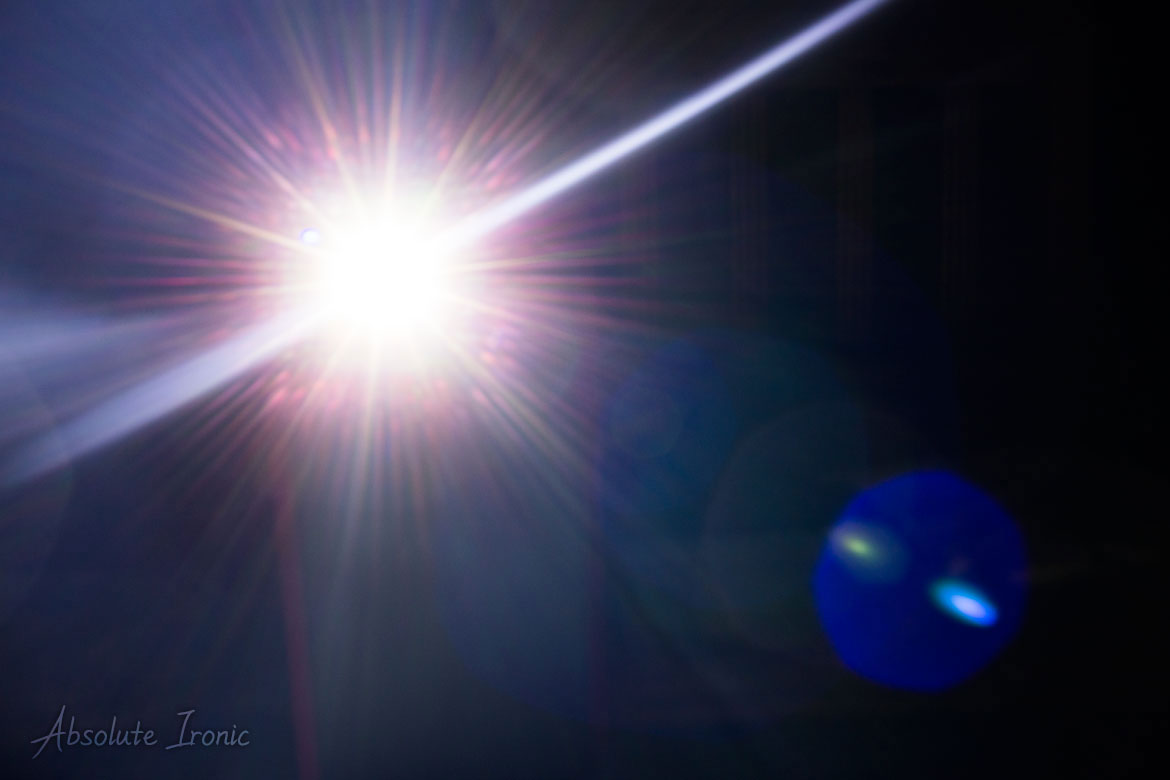This challenge is all about getting an understanding of lens flare. I'll share some guidelines for you to think about when creating lens flare yourself.
The term lens flare refers to a specific kind of light effect in a photo that’s caused by a bright light source (usually the sun). Most people don’t want that, because of it’s rather obscuring effect causing partly less contrast, or sometimes even overexposing the whole photo. To avoid this, people tend to use a lens hood to block out the light. In this challenge however, I want that specific kind of light to affect my photos. This because it can be very beautiful and stunning if created with care!
Lens flare occurs in different ways. This could be when a part of the photo is a lot brighter than the rest and has a soft tone - which is called Veiling Flare. Sometimes coloured circles (not bokéh) or hexagons appears in the photo. This is apparently called Ghost flare. There is also an effect when the sun looks like a star, (and yes, I know the sun itself is actually a star but you get my point). These three effects is what this challenge is about.
If you don’t understand what lens flare is by now, just google “lens flare photography”, or just check out the images below. Or do both.

@ 40mm • 1/100 • f/4 • ISO 800

@ 50mm • 1/60 • f/16 • ISO 800

@ 50mm • 1/800 • f/2.8 • ISO 800

@ 50mm • 1/100 • f/7.1 • ISO 200

@ 50mm • 1/250 • f/7.1 • ISO 400
Conclusion
I’ve tired to come to a conclusion of which settings is creating the lens flare just so that I could provide you with some guidelines. But to be honest, I’m really confused! What people always tend to say is “Use a small aperture to get a star-shaped looking sun!”- But in this challenge I’ve proven that the same effect could be achieved using a large aperture as well. (I’m referring to the 3th image with the lamp where I used an aperture of 2.8). Why did this work? - I have no idea! Lens flare is a mystery to me..
Don’t take my word for what I’m about to say, but I have some theories.
Basically, the smaller aperture you use the more star-shaped light you’ll get (because of how the lens work. I won’t go into that) but if the sun (or other light source) is very strong, you can get the star-shape even with a large aperture. I think the important part is to actually have the sun in focus. The larger aperture you use, the more important the focusing part becomes.
If you want the sun looking like a star, try to include the whole sun in the image. If you instead want the “Veiling Flare”, include only a small part of the sun or include only the sunbeams. This will also (if you’re lucky) create the “ghost flare”.
If you use a really small aperture, the chances are that the rest of you image will be very dark and the only visible thing is the sun (or other light source). Therefore you’ll need to compensate with either higher ISO or longer shutter speed (I recommend longer shutter speed), or simply turn the aperture value down a few steps.
Okay, enough with the theories. Let’s look at some facts!
I did a test in a controlled environment just to see for myself how the lens flare is affected by different aperture setting. Here I used a tripod, the flash light from my phone as the light source and three different aperture values; 2.8, 7.1 and 16. Take a look below to see the results!



What the images shows, is that the smaller aperture you use the more star-like the light becomes (but we already knew that). It also shows that the ghost flare is smoother on large apertures than small apertures. At f/2.8 it’s a circle and very bright, while at f/16 it looks more like hexagons and are not as bright. This is very good to know! The style I prefer is the one at f/2.8.
Another good thing to know is that the direction of the light can easily be changed with a polarizing filter (which just happens to be my favourite filter). Check out the images below!

Guidelines
- Take off you lens hood!
- For a star-shaped looking sun, use a small aperture
- For a hexagon-looking Ghost Flare, use a small aperture
- For smooth Ghost Flare, use a large aperture
- For Veiling Flare use a large aperture and include only a small part of the sun or sunbeams
- Use a polarizing filter (if you have one) to control the direction of the light
Note: I haven’t researched how to achieve lens flare. Everything I have said in this posts could be totally wrong. I am not an expert in this (obviously), I am not even a photographer. I just play around with my camera and advice you to do the same.